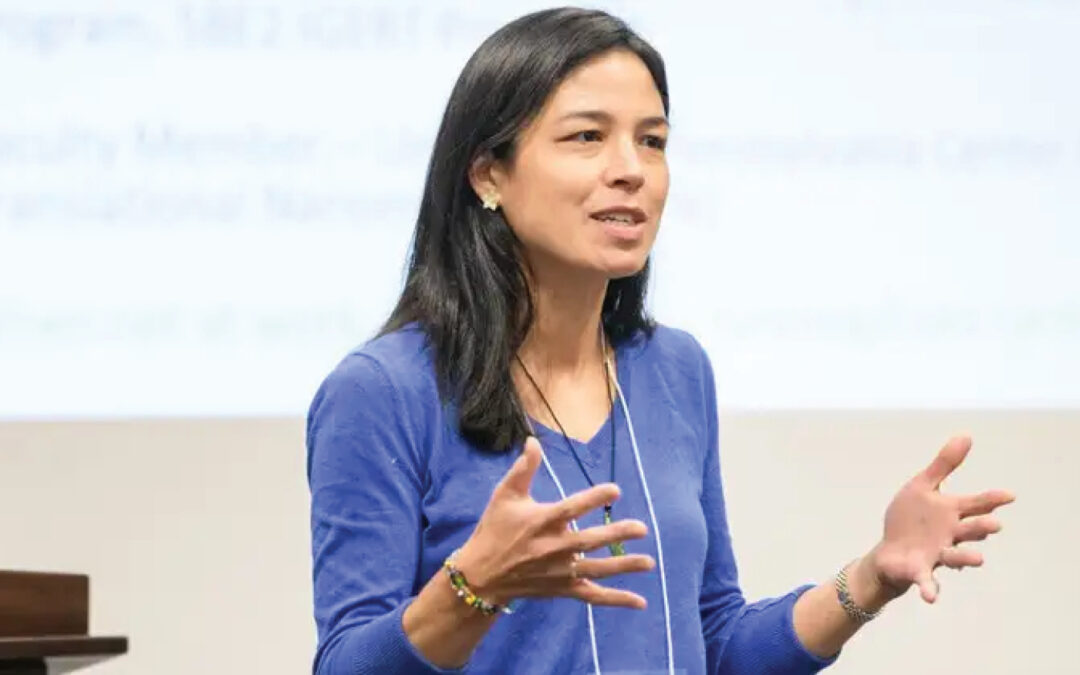Millie Sullivan is a professor and the associate chair of Chemical and Biomolecular Engineering Department within UD’s College of Engineering and a joint professor of Biomedical Engineering. She is an expert in biomaterials and drug delivery.
Prof. Millie Sullivan receives Fulbright Award to study gene therapies promoting wound healing at University of Melbourne
Cuts, scratches and scrapes. A tumble on the playground, a misadventure making dinner or a crisp piece of paper can make wounds and injuries a natural part of life. Each time the skin breaks, a concert of activity happens within the body, starting with the body’s immune system kicking in to prevent infection. Healing work takes place on the inside and out, as a scab forms on the surface so the damaged skin can heal underneath.
For most people, this remarkable process goes by unnoticed. With a bit of soap and water, ointment, a Band-Aid and some time, such everyday wounds are forgotten.
But serious wounds do not heal overnight — and some not at all. Treating a chronic wound, such as a diabetic foot ulcer, can be a frustrating, debilitating and expensive experience.
Looking to improve the outlook for chronic wound patients is the University of Delaware’s Millie Sullivan, professor and associate chair of Chemical and Biomolecular Engineering and joint professor of Biomedical Engineering, and an expert in biomaterials and drug delivery. Sullivan recently received a prestigious Fulbright Future Scholarship to support research in wound healing at the University of Melbourne during the spring of 2021, although the date of her research trip may change because of the coronavirus (COVID-19) pandemic.
A chronic or non-healing wound is one that does not progress through the normal stages of the healing process in a timely manner. In the United States, chronic wounds affect an estimated 6.5 million people, and treatment annually costs the medical system an estimated $25 billion.
“The healing outcomes for these patients are really poor, and the current treatments do only a little bit to make things better,” Sullivan said, noting that treatment of chronic wounds can be tedious for patients and medical professionals, and also come with much worse outcomes, including frequent amputations and an increased risk of death. “The environment in the chronic wounds is unique, and so we’ve used features of the chronic wound to inspire the design of new gene therapy approaches.”
For roughly 10 years, Sullivan has been honing her gene therapy concept to improve wound healing. With this latest research project, her goal is to generate new biomaterials that will deliver genetic material to support cell growth while creating a healthy environment to encourage recovery inside the wound.
Sullivan compares the biomaterial concept to “a fancy contact lens.” The materials in use in her lab are a type of hydrogel, which might look soft and squishy, but at the molecular level, are composed of a network of collagen bound with DNA encoding healing factors to accelerate wound healing. In travelling to the University of Melbourne to further her research, Sullivan will be able to work in a lab with unique production and processing methods for extracellular matrix proteins like collagen that will create unique microstructures for the hydrogels.
“It’s by nature a problem that requires collaboration, because it needs deep expertise in biomaterials design fundamentals — like biomaterials processing — as well as gene delivery, the focus of my lab,” Sullivan said.
While this will be Sullivan’s first time conducting research abroad, she has an existing relationship with the University of Melbourne, having previously directed UD study abroad programs there. These study abroad trips allowed her to meet her future collaborators. Sullivan and her University of Melbourne colleagues will hopefully be able to not only further innovate treatments for chronic wound patients but also gain a better understanding of how different materials interact with cells for other drug delivery and therapeutic delivery methods.
“The larger situation in the U.S. right now is that we are at a point where we hadn’t been at previously, where gene therapies are actually getting approved for clinical application,” Sullivan said. “When I started my career, this was not the case. I find this change in climate extremely inspiring because it shows that the larger environment is positioned to advance gene therapy products.”
About the Fulbright Program
The Fulbright Program is the flagship international educational exchange program sponsored by the U.S. government and is designed to forge lasting connections between the people of the United States and the people of other countries, counter misunderstandings, and help people and nations work together toward common goals. Since its establishment in 1946, the Fulbright Program has enabled more than 390,000 dedicated and accomplished students, scholars, artists, teachers and professionals of all backgrounds to study, teach and conduct research, exchange ideas and find solutions to shared international concerns. The Fulbright Program is funded through an annual appropriation made by the U.S. Congress to the U.S. Department of State. Participating governments and host institutions, corporations, and foundations around the world also provide direct and indirect support to the program, which operates in more than 160 countries worldwide.

